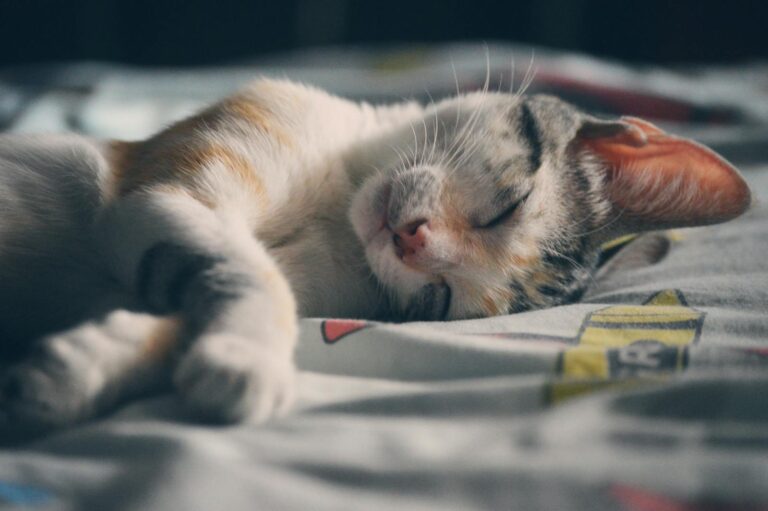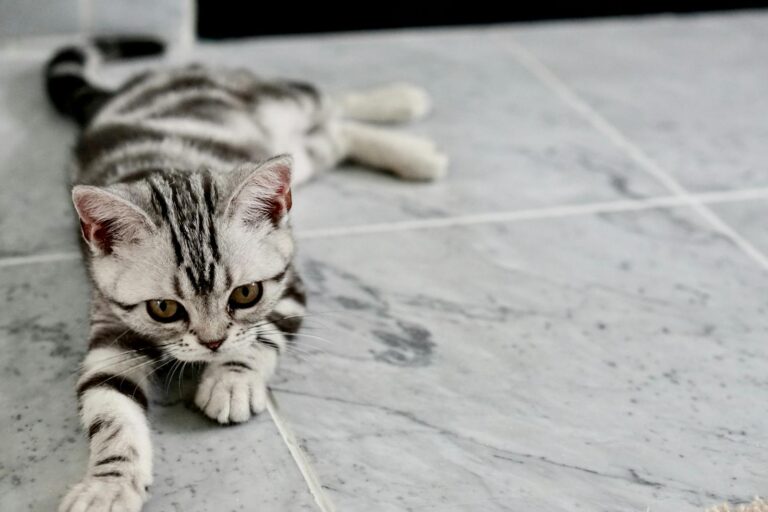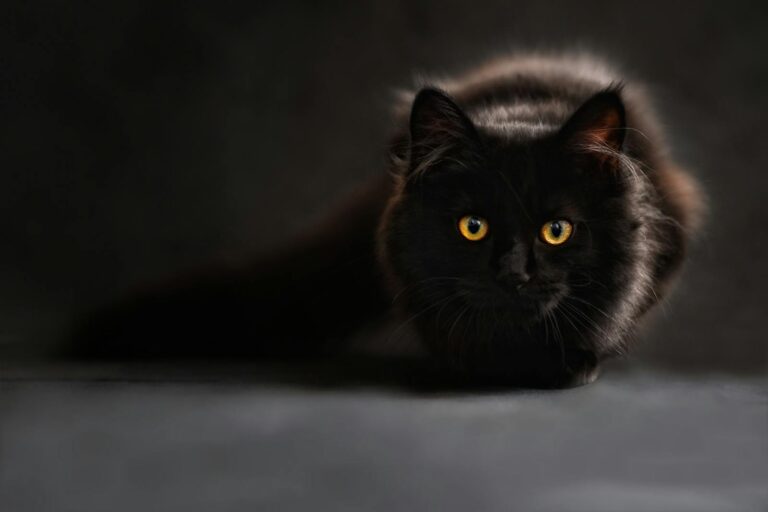Indoor vs. Outdoor Cats – Navigating the Lifestyle Choices for Your Feline Friend
When it comes to choosing the right lifestyle for our beloved feline companions, many pet owners find themselves grappling with the decision of whether to keep their cats indoors or allow them to roam outdoors. This dilemma often boils down to a careful consideration of the Indoor vs. Outdoor Cats: Pros and Cons. Understanding the various factors at play can help you make an informed choice that prioritizes your cat’s well-being.
Indoor vs. Outdoor Cats: A Comparative Analysis of Lifestyle Choices
The debate between indoor and outdoor living for cats is not just about personal preference; it’s also about the inherent needs of these animals and the environment in which they thrive. While both lifestyles have their unique benefits and challenges, understanding the specifics can help you decide what is best for your furry friend.
The Nature of Cats: An Instinctual Perspective
Cats are natural hunters, and this instinct is deeply embedded in their DNA. While domestication has tempered some of their primal behaviors, the urge to hunt remains a significant part of their identity.
- Instinctual Behaviors
Cats possess a range of instinctual behaviors such as stalking, pouncing, and climbing. These behaviors are crucial for their mental stimulation and enrichment. However, when kept indoors, it’s essential to simulate these experiences through interactive toys and activities. - Socialization Needs
While many cats enjoy solitary moments, they are also social creatures that thrive on companionship. This need can be met by keeping another pet or engaging regularly with their owners. Understanding your cat’s personality will guide you towards the most suitable lifestyle. - Environmental Exploration
Outdoor cats experience a rich tapestry of sights, sounds, and smells that stimulate their senses. For indoor cats, creating an enriched environment with scratching posts, climbing shelves, and interactive toys can provide a semblance of this exploration.
Behavioral Differences: Indoor vs. Outdoor Life
The behavioral differences between indoor and outdoor cats are influenced by their environments and interactions with humans and nature.
- Play and Engagement
Indoor cats might rely more on their human companions for entertainment, while outdoor cats engage in natural hunting and exploration. This difference can lead to varied physical and psychological health outcomes. - Territorial Behavior
Outdoor cats often establish territories and may exhibit aggressive behaviors towards other neighborhood cats. In contrast, indoor cats tend to be less territorial but can still develop specific preferences within their environment. - Adaptation Capabilities
Cats are surprisingly adaptable, yet their environments significantly impact their stress levels and overall happiness. Understanding how each type adjusts to their surroundings can help inform your choice.
Safety First: Exploring the Risks and Hazards of Outdoor Cat Life
One of the most pressing concerns related to outdoor cats is safety. The risks associated with allowing cats to roam freely cannot be understated, and understanding these dangers is crucial for any responsible pet owner.
Threats from Wildlife and Other Animals
While cats are often seen as predators, they can also fall victim to larger wildlife and aggressive pets.
- Predatory Animals
In urban and rural settings alike, predators such as coyotes, hawks, and other carnivorous animals pose a significant risk. A cat’s size and agility might not be enough to escape a determined predator. - Aggressive Stray Animals
Outdoor cats frequently encounter stray dogs and other cats, which can lead to injuries from fights over territory or food. Such encounters can also spread diseases like feline leukemia and feline immunodeficiency virus (FIV). - Poisonous Wildlife
Certain plants and insects are toxic to cats. Outdoor cats may encounter poisonous substances that could lead to serious health issues or even fatality.
Environmental Hazards
Beyond wildlife, numerous environmental factors threaten outdoor cats’ safety and longevity.
- Traffic Dangers
Road traffic is one of the leading causes of death for outdoor cats. Limited awareness of vehicles can result in fatal accidents, especially in busy neighborhoods. - Harsh Weather Conditions
Extreme weather—whether scorching heat or bitter cold—can endanger outdoor cats. They lack the ability to seek shelter consistently, putting them at risk for heatstroke, frostbite, or hypothermia. - Human Interactions
Unfortunately, not all humans view cats positively. Some might purposely harm strays, while others may neglect their responsibility in ensuring safe environments for animals.
Disease Exposure
Outdoor cats face exposure to numerous pathogens that indoor cats typically avoid.
- Parasitic Infections
Fleas, ticks, and worms are prevalent among outdoor cats due to their interaction with grass, soil, and other animals. These parasites can lead to severe health complications if left untreated. - Transmissible Diseases
Cats that roam freely are at higher risk of contracting viral infections and diseases from other felines. Vaccination might mitigate some of these risks, but prevention is ultimately more effective. - Reduced Lifespan
Statistically, outdoor cats tend to have shorter lifespans than their indoor counterparts. The combination of hazards mentioned contributes to a significantly increased mortality rate.
Enrichment and Exercise: Meeting the Behavioral Needs of Indoor Cats
While indoor cats may seem deprived compared to their outdoor counterparts, there are ample ways to provide them with the stimulation, exercise, and engagement they need to foster a healthy mindset.
Creating a Stimulating Environment
Indoor cats require environments that simulate the thrill of the outdoors.
- Interactive Toys
Toys that mimic prey, such as feather wands or laser pointers, encourage cats to engage in active play. These items can replicate the hunting experience and ensure adequate physical exercise. - Climbing Structures
Cat trees and shelves provide vertical space for climbing and observing their surroundings. This encourages natural instincts, promotes physical fitness, and provides mental stimulation. - Puzzle Feeders
Introducing puzzle feeders into mealtime can challenge your cat mentally and physically. This practice can prevent boredom and encourage hunting-like behavior during feeding.
Routine and Structure
Establishing a routine can also greatly benefit indoor cats.
- Scheduled Playtime
Integrating regular play sessions into your cat’s daily schedule can serve as a bonding experience while fulfilling their exercise needs. Try to set aside time daily for interactive play. - Variety is Key
Rotate toys regularly to keep your cat engaged and curious. Introducing new experiences, whether new toys or different play areas, can significantly reduce boredom. - Enrichment Activities
Consider using enriching activities such as scent trails or hiding treats around your home. Encouraging exploration within your living space taps into their natural instincts and keeps them mentally stimulated.
Social Interaction
Fostering strong social bonds can enhance an indoor cat’s quality of life.
- Companionship with Other Pets
If feasible, consider adopting another cat or pet. Companionship can alleviate loneliness and provide additional opportunities for play and social interaction. - Human Interaction
Spend quality time daily with your cat. Engaging activities, such as grooming or simply sitting together, can enrich their lives and strengthen your bond. - Training Opportunities
Teaching tricks through positive reinforcement can provide mental stimulation and further enhance your relationship. Simple commands or even agility training can transform ordinary moments into exciting interactions.
Health and Longevity: Examining the Impact of Environment on Feline Well-being
The environment in which a cat lives plays a fundamental role in determining its overall health and longevity. Understanding the impacts of indoor versus outdoor living conditions is vital for making informed decisions as a pet owner.
Indoor Cats: Health Benefits
Indoor cats often enjoy several health advantages that contribute to longer lifespans.
- Lower Risk of Infectious Diseases
Indoor cats have less exposure to infectious agents, reducing the likelihood of contracting diseases from other animals. Regular veterinary care can further safeguard against potential health issues. - Weight Management
Without access to constant outdoor stimuli, indoor cats are often more sedentary. However, provided with interactive play, they can maintain a healthy weight more effectively. Obesity leads to numerous health problems; thus, ensuring consistent exercise is paramount. - Reduced Stress Factors
Indoor environments can generally be controlled for comfort, allowing for reduced stress factors such as loud noises or aggressive animals. Cats thrive in calm and predictable spaces, contributing to overall well-being.
Outdoor Cats: Potential Health Risks
Conversely, outdoor cats face numerous health challenges that can directly impact their well-being.
- Exposure to Diseases
Outdoor cats are susceptible to various diseases, including rabies and feline panleukopenia, which can be detrimental to their lives. Regular vaccinations can mitigate these risks, but they won’t eliminate them entirely. - Injuries from Fights
Engaging in territorial disputes with other cats can lead to injuries, abscesses, and even long-term health consequences. Many injuries go unnoticed until they become serious health issues. - Chronic Parasite Problems
Outdoor cats often suffer from chronic issues caused by fleas, ticks, and worms, requiring vigilant management to prevent severe infestations impacting their health.
Longevity Considerations
The choices made regarding indoor or outdoor living environments can significantly influence your cat’s life expectancy.
- Statistical Data
Research indicates that indoor cats typically live an average of 12-15 years, while outdoor cats often only survive 5-7 years on average. These statistics underline the importance of considering lifestyle choices carefully. - Preventative Health Care
Regardless of living conditions, regular veterinary check-ups and preventative care remain important factors influencing longevity. Ensuring your cat receives proper nutrition, vaccinations, and medical attention is essential. - Monitoring Changes
Pay attention to your cat’s behavior and health. Whether indoors or outdoors, being observant allows for early detection of any potential health concerns before they escalate.
Environmental Impact: The Ecological Footprint of Outdoor Cats
While the focus of this article centers on the Indoor vs. Outdoor Cats: Pros and Cons, the ecological implications of having outdoor cats shouldn’t be overlooked. Understanding their environmental impact contributes to responsible pet ownership and fosters ethical considerations.
Biodiversity Threats
Outdoor cats can significantly affect local ecosystems due to their predatory behaviors.
- Hunting Practices
Cats are skilled hunters, and their presence can drastically reduce populations of native birds, small mammals, and reptiles. The impact of feral and free-roaming cats has been noted in various studies, emphasizing the need for responsible management. - Invasive Species
In some regions, outdoor cats have contributed to the decline of endangered species. Their hunting practices can facilitate the spread of invasive species, further threatening biodiversity. - Ecosystem Imbalance
The removal of native prey populations due to hunting can create imbalances in the ecosystem, affecting not only the species that cats hunt but also the broader community of flora and fauna that depend on those species.
Community Considerations
Communities must consider the collective impact of outdoor cats.
- Property Damage
Roaming cats can cause damage to gardens, landscapes, and property. This affront can strain relationships between neighbors and lead to frustration among community members. - Public Health Concerns
Outdoor cats may contribute to public health issues, including zoonotic diseases that can be transmitted to humans. Responsible cat ownership should account for the implications of allowing pets to roam freely. - Community Education
Educating communities about responsible pet ownership, including spaying/neutering and managing feral cat populations, can promote healthier environments for both people and animals.
Solutions and Best Practices
Addressing the ecological footprint of outdoor cats requires practical solutions and proactive measures.
- Spaying and Neutering
Encouraging spaying and neutering can significantly reduce the number of feral and free-roaming cats, minimizing their ecological impact and helping maintain biodiversity. - Controlled Outdoor Time
For those who wish to provide their cats with outdoor experiences, consider supervised outings using leashes or “catios” (enclosed outdoor patios). This approach satisfies their instinctual urges while protecting local wildlife. - Community Initiatives
Support local programs that work toward managing feral cat populations through TNR (trap-neuter-return) initiatives, providing a humane way to control numbers while giving cats a chance at a stable life.
Responsible Ownership: Making an Informed Decision About Your Cat’s Environment
Ultimately, the journey of deciding between indoor and outdoor living for your cat can be complex. It requires a responsible approach that considers individual circumstances alongside broader implications.
Evaluating Your Lifestyle
Before making a final decision, assess your lifestyle and ability to meet your cat’s needs.
- Living Space
Is your home equipped to accommodate an indoor cat comfortably? If not, consider modifications that will enhance their quality of life. - Time Commitment
Evaluate your availability for playtime, social interaction, and healthcare management. Cats, regardless of their environment, require love and attention from their owners. - Safety Commitments
Are you prepared to keep your cat safe from potential dangers? If outdoor living is a priority, developing strategies for monitoring their safety is essential.
Personalizing the Decision
Every cat is unique, and their personalities play a vital role in shaping their ideal environment.
- Temperament Assessment
Some cats thrive with more independence and outdoor access, while others may prefer the safety and stability of indoor living. Understanding your cat’s temperament can guide your decision-making process. - Age and Health Factors
Kittens and younger cats might have different needs than older or ill cats. Tailor your approach based on your cat’s life stage and health conditions. - Feedback from Veterinarians
Consult with your veterinarian to gain insights into what works best for your specific cat. They can help identify risks associated with outdoor living and make tailored suggestions.
Long-Term Considerations
As your cat ages, their needs may change, necessitating adjustments to their living arrangements.
- Adapting Environments
Be ready to modify your home as your cat grows. Elderly cats may require more accessible environments or alternative support systems to maintain their quality of life. - Transitioning Between Environments
If you initially chose to allow outdoor access but now feel it’s no longer wise, consider transitioning them back to an indoor lifestyle gradually. Providing an enriched indoor environment can ease this transition. - Continuous Learning
Stay informed about best practices in feline care and environmental impacts. As our understanding of cat behaviors and health evolves, adapting your approaches to align with new insights is critical.
Conclusion
Deciding between indoor and outdoor living for your cat involves weighing a multitude of factors, including safety, health, environmental impact, and the specific needs of your feline friend. While indoor cats may benefit from enhanced safety and health outcomes, outdoor cats embrace their natural instincts and exploratory behaviors. Ultimately, responsible ownership hinges on understanding these dynamics and making informed decisions that prioritize your cat’s happiness and well-being, while also considering the broader implications for the community and environment.







